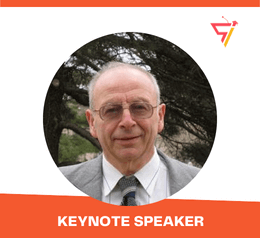Scholars International Conference on
Optics, Photonics and Lasers
THEME: "Frontiers in Optics, Photonics and Lasers Research"
 22-24 Jun 2022
22-24 Jun 2022  NH Potsdam | Berlin, Germany & Online
NH Potsdam | Berlin, Germany & Online THEME: "Frontiers in Optics, Photonics and Lasers Research"
 22-24 Jun 2022
22-24 Jun 2022  NH Potsdam | Berlin, Germany & Online
NH Potsdam | Berlin, Germany & Online 
Kansas State University, USA
Title: Creating materials with a desired refraction coefficient
Alexander G. Ramm was born in Russia, emigrated to USA in 1979 and is a US citizen. He is Professor of Mathematics with broad interests in analysis, scattering theory, inverse problems, theoretical physics, engineering, signal estimation, tomography, theoretical numerical analysis and applied mathematics. He is an author of 708 research papers, 20 research monographs and an editor of 3 books. He has lectured in many Universities throughout the world, gave more than 150 invited and plenary talks at various Conferences and had supervised 11 Ph.D students. He was Fulbright Research Professor in Israel and in Ukraine, distinguished visiting professor in Mexico and Egypt, Mercator professor, invited plenary speaker at the 7-th PACOM, he won Khwarizmi international award in 2004, and received many other honors. A.G.Ramm has solved inverse scattering problems with fixed-energy scattering data, with non-over-determined scattering data and studied scattering problems with under-determined scattering data. He solved many specific inverse problems and developed new methods in this area. He solved the many-body wave scattering problem when the bodies are small particles of arbitrary shapes and used this theory to give a recipe for creating materials with a desired refraction coefficient. These results attracted attention of the scientists working in nanotechnology. He gave formulas for the scattering amplitude for scalar and electro- magnetic waves by small bodies of arbitrary shapes and formulas for the polarizability tensors for such bodies. He gave a solution to the Pompeiu problem, proved the Schiffer's conjecture and gave first symmetry results in harmonic analysis. He has developed the Dynamical Systems Method (DSM) for solving linear and non-linear operator equations, especially ill-posed. He developed a random fields estimation theory and studied convolution equations with hyper-singular integrals. recently, he solved the millennium problem, the Navier-Stokes problem (NSP) and proved a paradox in the NSP which shows the contradictory nature of the NSP and the non-existence of its solution on the interval t 2 [0;1) for the initial data v0(x) 6 0 and f(x; t) = 0.
The theory of acoustic and electromagnetic (EM) wave scattering by one and many small impedance particles of arbitrary shapes is developed. The basic assumptions are: a << d << lambda, where a is the characteristic size of particles, d is the smallest distance between the neighboring particles, is the wavelength. This theory allows one to give a recipe for creating materials with a desired refraction coefficient. One can create material with negative refraction: the group velocity in this material is directed opposite to the phase velocity. One can create a material with a desired wave focusing property. Equation is derived for the EM field in the medium in which many small impedance particles are embedded.
Similar results are obtained in [6] for heat transfer in the media in which many small particles are distributed.
The theory presented in this talk is developed in [1]-[9].
Practical realizations of this theory are discussed in [9].
In [9] the problem of creating material with a desired refraction coefficient is discussed in the case when the material is located inside a bounded closed connected surface on which the Dirichlet boundary condition is imposed.